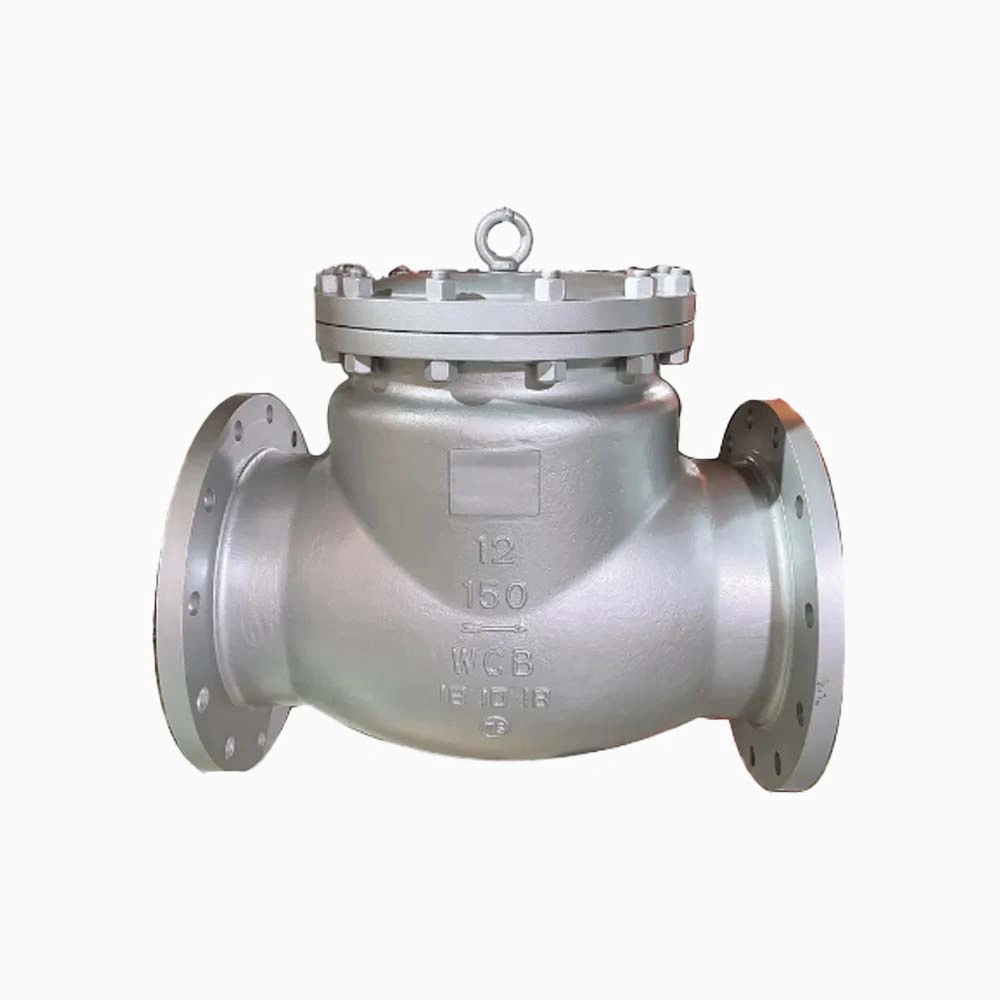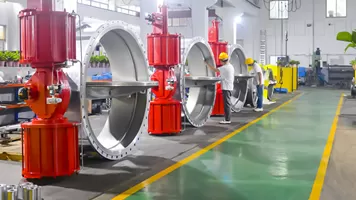In various industrial processes and even in our daily water supply systems, preventing backflow is of utmost importance. Backflow can lead to contamination, damage to equipment, and in some cases, pose a serious threat to public health. There are several methods available to prevent backflow, each with its own unique features and applications. This article will explore these methods in detail to help you make an informed decision for your specific needs.
Check Valves: The Most Common Backflow Prevention Device
Check valves are one of the most widely used backflow prevention devices in the field of fluid transportation, and they play an indispensable role in many industrial scenarios and daily life piping systems. It is designed with the explicit purpose of ensuring that the fluid can flow smoothly in one direction only. This characteristic is essential for the proper operation of various systems, such as water supply systems, to prevent water backflow and contamination of the water supply.
When the flow direction of the fluid is reversed, the exquisite construction of the check valve comes into play. The internal valve disc or spool and other components will react quickly under the action of the reverse impact force of the water flow and automatically close the valve channel. This automated response mechanism, without manual intervention, can promptly and effectively prevent fluid backflow, to avoid a series of potential problems caused by reflux pressure imbalance, equipment damage, and so on, so as to build a solid line of defense for the stable and safe operation of the entire fluid delivery system
When the flow direction of the fluid is reversed, the exquisite construction of the check valve comes into play. The internal valve disc or spool and other components will react quickly under the action of the reverse impact force of the water flow and automatically close the valve channel. This automated response mechanism, without manual intervention, can promptly and effectively prevent fluid backflow, to avoid a series of potential problems caused by reflux pressure imbalance, equipment damage, and so on, so as to build a solid line of defense for the stable and safe operation of the entire fluid delivery system
Swing Check Valves
Swing check valves have a disc that pivots on a hinge. When the fluid flows in the forward direction, the pressure of the fluid pushes the disc open, allowing the fluid to pass through. When the flow stops or reverses, the disc swings back to its closed position due to gravity and the reverse pressure of the fluid. This type of check valve is simple in design and relatively inexpensive. It is suitable for a wide range of applications, such as in water supply pipelines, oil and gas pipelines, and industrial processes where the flow rate is not extremely high.

Lift Check Valves
Lift check valves operate based on a different principle. In this type of valve, a piston or disc is lifted off its seat by the pressure of the forward – flowing fluid. When the flow reverses, the piston or disc drops back onto the seat, sealing the valve and preventing backflow. Lift check valves are known for their tight shut – off capabilities. They are often used in applications where a more positive seal is required, such as in high – pressure systems or in processes where the presence of any backflow could cause significant problems, like in pharmaceutical or food and beverage production.
Ball Check Valves
Ball check valves use a spherical ball as the closing element. When the fluid flows in the proper direction, the ball is pushed away from the seat, creating an opening for the fluid to pass. When the flow reverses, the ball is forced back onto the seat by the pressure of the reversed flow, effectively preventing backflow. Ball check valves are popular for their quick response time and ability to handle high – velocity flows. They are commonly used in hydraulic systems, pneumatic systems, and in some cases, in small – scale plumbing applications.
Pressure – Vacuum Breakers
Pressure – vacuum breakers (PVBs) hold a crucial position as another significant means of preventing backflow, particularly within water supply systems. These systems are the lifeline for countless residential, commercial, and industrial establishments, making the prevention of backflow an absolute necessity.
PVBs are ingeniously engineered to safeguard against two main types of backflow scenarios: backpressure and backsiphonage. Backpressure occurs when the pressure in the downstream portion of the water line exceeds that of the upstream side, potentially forcing contaminated water back into the clean supply. PVBs counteract this by using a series of check valves and air – inlet mechanisms. When backpressure is detected, the check valves close tightly, blocking the reverse flow path.
In the case of backsiphonage, which is often caused by a sudden drop in pressure in the supply line creating a suction effect, PVBs spring into action. Their air – inlet valves open to allow air to enter the system, breaking the siphon and preventing water from being drawn back in the wrong direction. This dual – protection feature makes PVBs an essential component in maintaining the integrity and safety of water supply systems.
How PVBs Work
A pressure – vacuum breaker consists of an air inlet valve and a check valve. When the water pressure in the supply line is normal, the check valve remains open, allowing water to flow through. The air inlet valve is closed during normal operation. However, if the pressure in the supply line drops below a certain level (causing backsiphonage) or if there is a reverse pressure (backpressure), the check valve closes to prevent the contaminated water from flowing back into the clean water supply. At the same time, the air inlet valve opens, allowing air to enter the system. This breaks the siphon and prevents the backflow of water.
Applications of PVBs
PVBs are commonly used in irrigation systems. In an irrigation network, if the water supply pressure drops due to a main line break or if the pump stops operating, there is a risk of water from the irrigated fields (which may be contaminated with fertilizers, pesticides, or soil particles) flowing back into the clean water supply. Pressure – vacuum breakers installed at appropriate points in the irrigation system prevent this from happening, ensuring the safety of the water supply for other uses.
Double – Check Valve Assemblies
Double – check valve assemblies (DCVAs) are used in situations where a high level of backflow protection is required. As the name implies, a double – check valve assembly consists of two independent check valves installed in series.
Working Principle
The first check valve in the assembly is designed to prevent the majority of the backflow. If, for some reason, the first check valve fails to completely stop the backflow, the second check valve acts as a backup. The two check valves are separated by a pressure differential gauge. This gauge is used to monitor the performance of the two check valves. If there is a significant pressure drop across the two check valves, it indicates that one or both of the check valves may not be functioning properly, alerting the operator to take corrective action.
Installation and Maintenance
DCVAs are typically installed in commercial and industrial water supply systems, as well as in some high – risk residential applications. Proper installation is crucial for their effective operation. The valves should be installed in a horizontal position, and there should be enough space around them for maintenance and inspection. Regular maintenance, including checking the condition of the check valves, cleaning the strainers (if equipped), and calibrating the pressure differential gauge, is essential to ensure the continued effectiveness of the double – check valve assembly.
Reduced – Pressure Principle Backflow Preventers
Reduced – pressure principle backflow preventers (RPBs) are considered the most reliable form of backflow prevention for high – risk applications.
Operation Mechanism
An RPB consists of two independently acting check valves separated by an intermediate chamber. The intermediate chamber is equipped with a relief valve. When water flows in the forward direction, the pressure of the water opens both check valves, allowing the water to pass through. In the event of backflow, the first check valve closes due to the reverse pressure. If the reverse pressure is high enough, the relief valve in the intermediate chamber opens, discharging the water in the intermediate chamber to the atmosphere or a safe drain. This reduces the pressure in the intermediate chamber, causing the second check valve to close tightly, preventing any further backflow.
High – Risk Applications
RPBs are commonly used in applications where the consequences of backflow are extremely severe, such as in chemical processing plants, power plants, and water treatment facilities. In a chemical processing plant, for example, if a corrosive or toxic chemical were to backflow into the water supply system, it could have disastrous consequences for the environment and public health. RPBs provide a high level of protection in such situations.
Choosing the Right Backflow Prevention Method
When choosing a method to prevent backflow, several factors need to be considered.
Application Requirements
The nature of the application is the first and most important factor. For example, in a residential plumbing system, a simple check valve or a pressure – vacuum breaker may be sufficient to prevent backflow. However, in an industrial setting where there are high – pressure systems, the presence of hazardous substances, or strict regulatory requirements, more complex and reliable backflow prevention devices like double – check valve assemblies or reduced – pressure principle backflow preventers may be necessary.
Cost Considerations
Cost is also a significant factor. Check valves are generally the most cost – effective option, especially for small – scale applications. However, for applications that require a high level of backflow protection, the initial investment in more complex devices like RPBs may be justified in the long run, considering the potential costs associated with backflow, such as equipment damage, product contamination, and environmental cleanup.
Maintenance and Reliability
The ease of maintenance and the reliability of the backflow prevention device are also important considerations. Some devices, like ball check valves, may require less frequent maintenance due to their simple design. On the other hand, devices like double – check valve assemblies and RPBs, although more reliable, may require more regular inspection and maintenance to ensure their proper functioning.
In conclusion, preventing backflow is essential in many industries and applications. By understanding the different methods available, such as check valves, pressure – vacuum breakers, double – check valve assemblies, and reduced – pressure principle backflow preventers, and considering factors like application requirements, cost, and maintenance, you can choose the most suitable backflow prevention method for your needs. As a leading valve supplier, we offer a wide range of high – quality backflow prevention products. Our team of experts is also available to provide you with professional advice and support to ensure that you make the right choice for your specific application. Contact us today to learn more about our products and how we can help you prevent backflow effectively.

